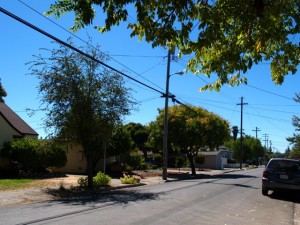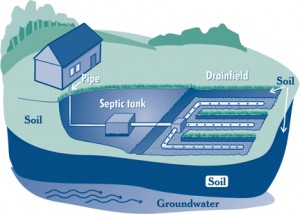Have you ever noticed that if there is a major power  outages, some neighborhoods seem to be without power longer than others? And sometimes a neighborhood close to an urban area might be longer out of power than other areas. I noticed in our area, parts of Fulton and the Russian River area tend to be out of power longer than the direct surrounding area.
outages, some neighborhoods seem to be without power longer than others? And sometimes a neighborhood close to an urban area might be longer out of power than other areas. I noticed in our area, parts of Fulton and the Russian River area tend to be out of power longer than the direct surrounding area.
Coming from the Netherlands where all power lines are in the ground moving to an area with power lines above ground was something to get used to. They are part of a street view, sometimes blocking a view or going over part of a property, affecting the desirability of a property. Power lines above ground are more vulnerable to outages during storm or  when a trees falls on a power line or a pole holding the power line is hit by a car. Researchers at Carnegie Mellon University, Pittsburgh, Pa., have concluded that the average U.S. electrical utility customer experiences 214 minutes of power outage each year. The research also indicates that the U.S. ranks towards the bottom among developed nations in terms of reliability of electricity service. The last Superbowl had a 30 minute power outage.
when a trees falls on a power line or a pole holding the power line is hit by a car. Researchers at Carnegie Mellon University, Pittsburgh, Pa., have concluded that the average U.S. electrical utility customer experiences 214 minutes of power outage each year. The research also indicates that the U.S. ranks towards the bottom among developed nations in terms of reliability of electricity service. The last Superbowl had a 30 minute power outage.
 With that said, to a certain extent one can predict whether a neighborhood will have shorter or longer power outages in case of a major power outage. The PG&E website gives some good guidelines: “First hazardous situations, such as downed wires. After that the focus is the largest number of customers and on repairs that will restore service to critical facilities such as hospitals, water pumping stations and police and fire departments.
With that said, to a certain extent one can predict whether a neighborhood will have shorter or longer power outages in case of a major power outage. The PG&E website gives some good guidelines: “First hazardous situations, such as downed wires. After that the focus is the largest number of customers and on repairs that will restore service to critical facilities such as hospitals, water pumping stations and police and fire departments.
Should you desire to do so, you can make this part of your due diligence before you decide to move to a certain neighborhood or area. If you know upfront that the neighborhood you decide to move to is always the last one the power is restored, invest in a good generator or an other alternative power source.
Mirjam

